Ossetian national costume
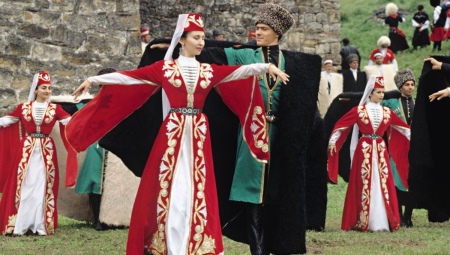
Each nationality is unique in its own way, because all traditions are different from each other, and each nationality has its own, characteristic only of it, customs. Perhaps it is no secret that different peoples are rich not only in traditions and customs, but also have their own national clothes - bright, colorful costumes.
The peoples of such a wonderful region as Ossetia also have a very beautiful costume. Ossetians respect and observe their traditions, and are also truly proud of their national dress.
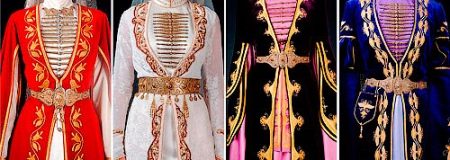
The main features of traditional clothing
The national costume of the Ossetians, despite its bright, colorful colors, is rather restrained in cut and style, primarily because the Ossetians do not accept even the smallest manifestations of vulgarity and vulgarity in clothing.
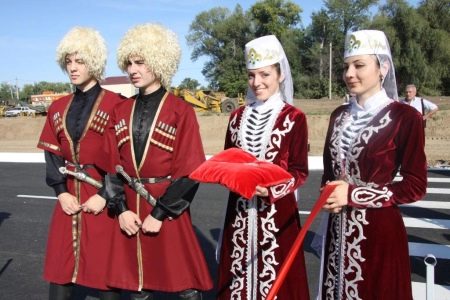
It is noteworthy that the Ossetian traditions do not allow the factory production of costumes, this craft is carried out exclusively by women and exclusively at home, manually embroidering every, even the smallest, detail of clothing.

In the old days, due to the lack of a wide selection of materials intended for the manufacture of national clothes, Ossetian women dyed the available fabrics in the colors they needed. It is worth noting that the paints were also made with our own hands.
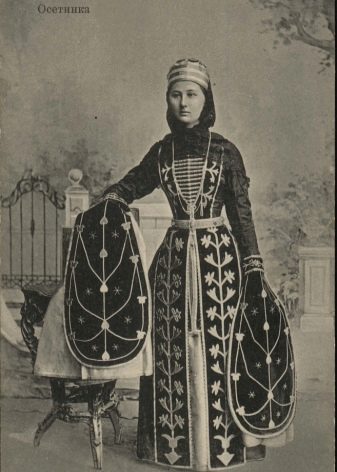
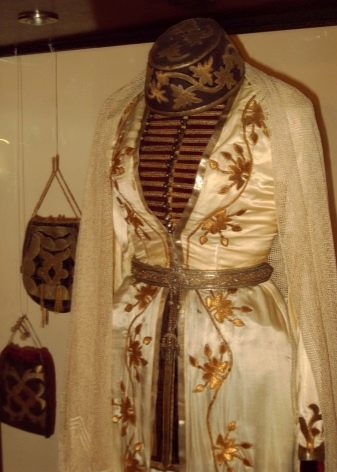
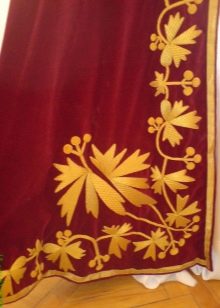
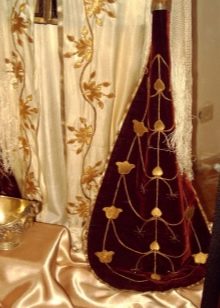
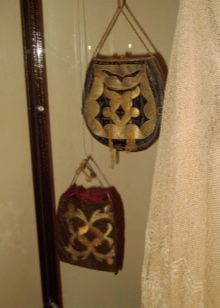
Nowadays, the abundance of materials in store windows allows you not to resort to trickery, but to easily choose a material of a suitable structure and the desired shade. But despite the use of factory fabrics, the costume itself is still handcrafted.

The national costumes of the Ossetians have a long history and the corresponding historical significance. The traditional outfit consists not only of clothing, but also includes various kinds of jewelry. The style itself has practically not undergone any changes and has retained its main characteristic features to this day.
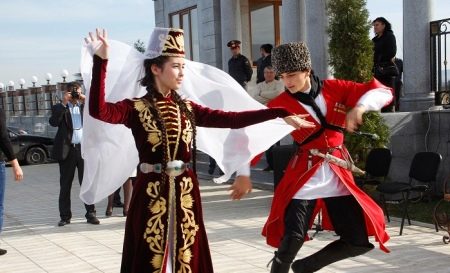
Woman suit
To this day, the Ossetian women's costume has survived only as an outfit for wedding ceremonies held in accordance with all the traditions of the people. But in the old days, every girl and woman put on a similar dress for any holidays and special occasions.
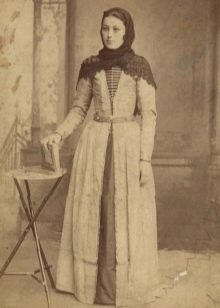
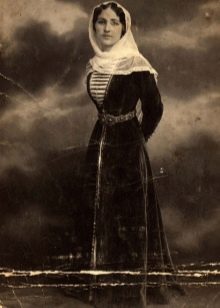
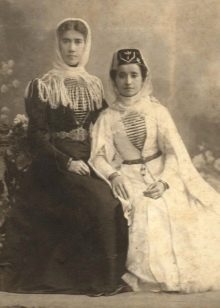
Women's Ossetian national dress includes:
- light shirt;
- corset or special decorative bib;
- floor-length dress made of light flowing fabric;
- velor or velvet robe without fasteners, which is fixed with a belt or belt;
- handkerchief;
- a hat called "thin";
- special soft shoes - "chuvyaki"
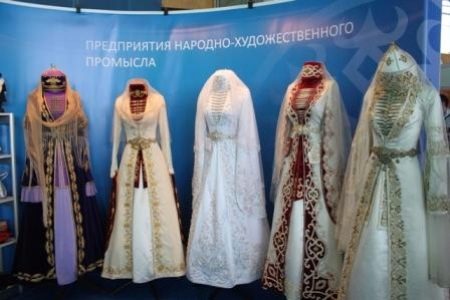
The first styles of the Ossetian female costume had only distant differences from the male model, but over time they underwent significant changes. The costume, intended for the beautiful half of humanity, has acquired appropriate, feminine features.
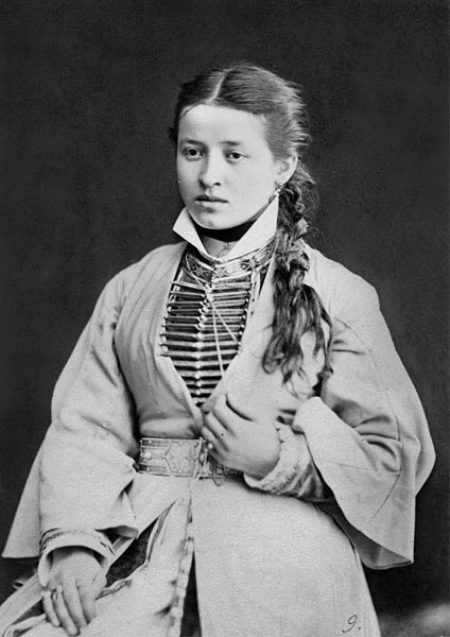
The style has become more fitted, the back of the product in the modern version looks more graceful, but the collar of the product is still high, covering the chest and part of the neck.
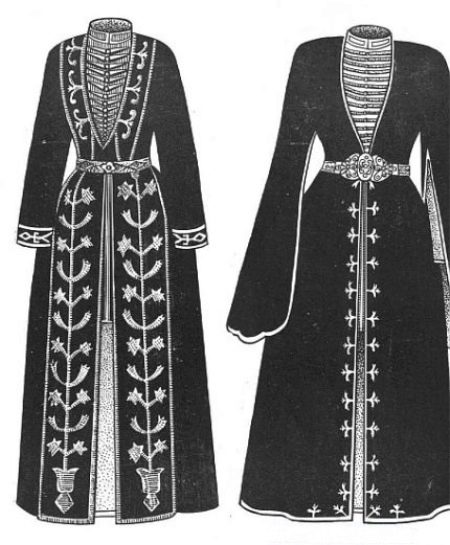
For special occasions, as a decoration, a specially designed apron was tied to the thigh, embroidered with decorative stones and decorated with bright shiny embroidery, which looked out from under the dress.
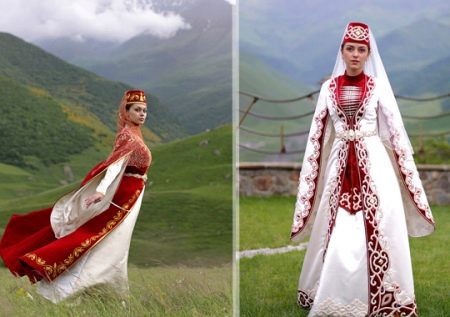
For the models of the upper dressing gowns with narrow sleeves, additional elements were used in the form of hinged sleeves made of the same velvet material, embroidered with golden patterns and ornaments.
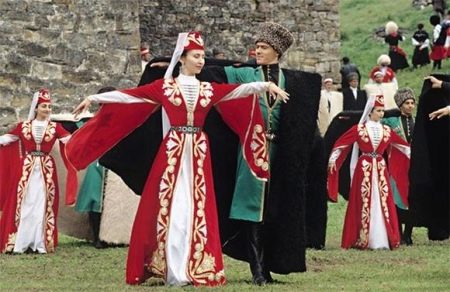
A beautiful wide belt, decorated with gilding and stones, was tied at the waist. Such an element looked especially beautiful on slender Ossetian girls, emphasizing the stateliness and grace of the figure.

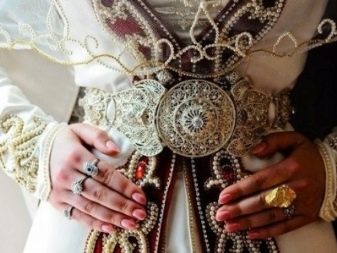
But in addition to elegant models, there were also many everyday options for Ossetian women's dress. Fold-over collar-stand, sleeves, gradually tapering at the wrists and a restrained appearance - these are the main features of the everyday outfit of an Ossetian woman.
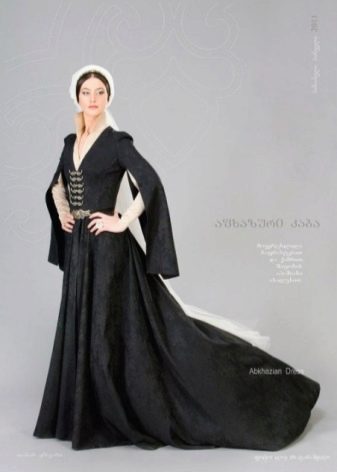
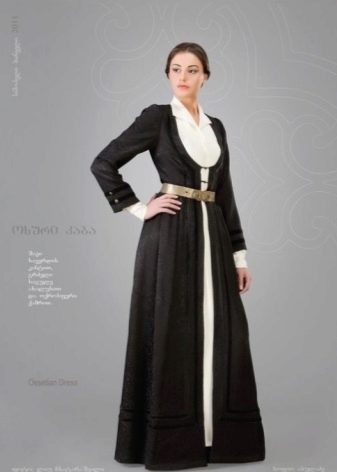
Men's suit
The traditional details of the men's Ossetian costume are:
- Circassian - special outerwear, like a caftan;
- beshmet is another element of outerwear, a distinctive feature of which is a stand-up collar.
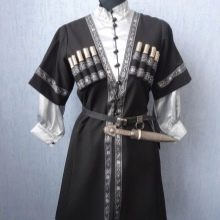
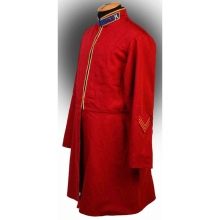
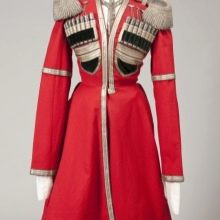
In addition to the above elements, the men's suit includes other details:
- Bashlyk - a pointed-cut hood made of cloth. It is worn over the headgear if weather conditions require it.
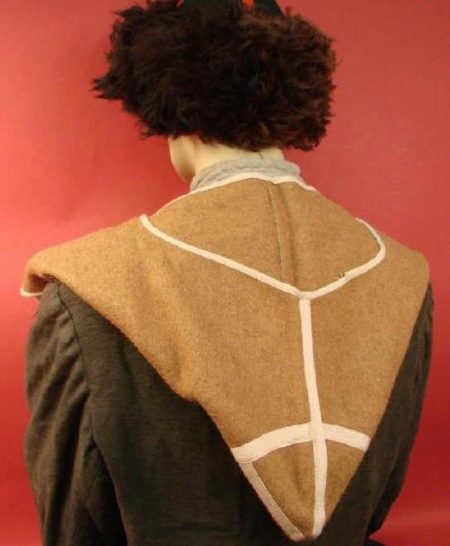
- Harem pants - loose-fitting pants, fastened at the waist, slightly gathered in the hips, with a tightening element in the ankle
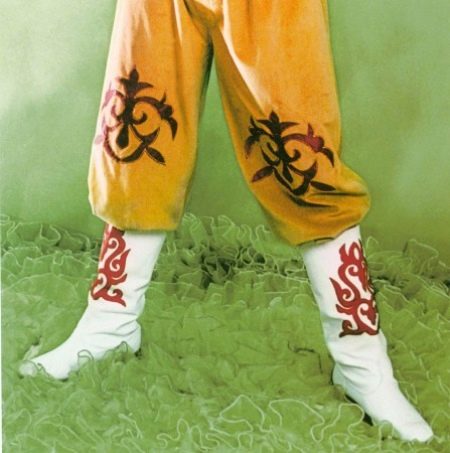
- Legs are a special element that is considered part of a shoe, but does not have a foot. This part is for shin protection.
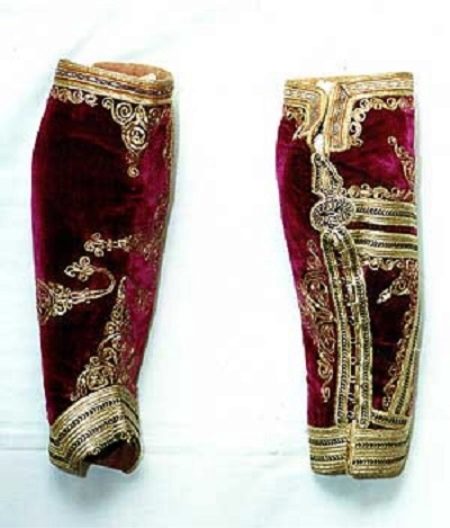
- A papakha is a fur headdress made of astrakhan wool or traditional sheepskin.
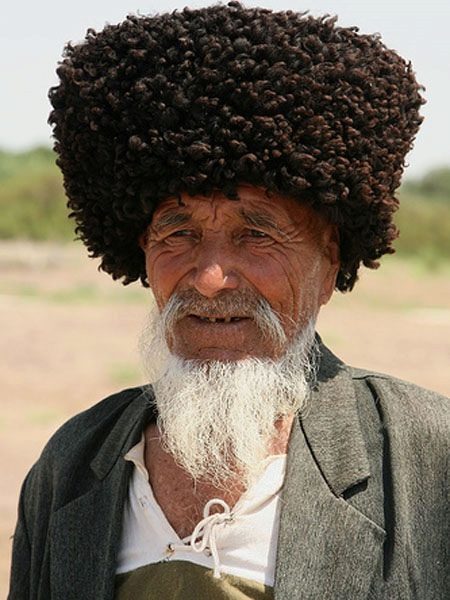
- Burka is a special sleeveless raincoat made of felt material. The raincoat has only three color options: white, black and brown
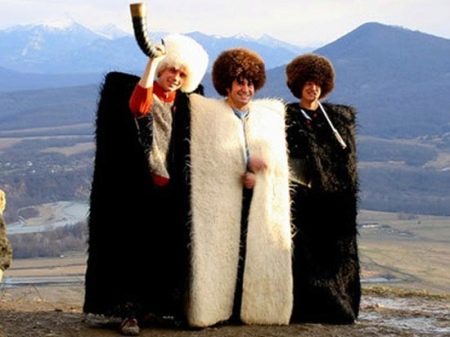
- Ron is a traditional Ossetian narrow belt made of leather or fabric material.
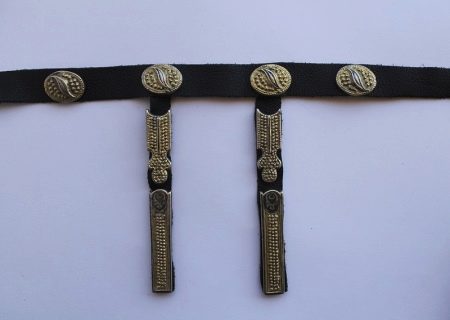
- The dagger was also an integral part of the outfit.

The traditional men's costume was worn over special underwear used for comfort and skin protection.
Regarding the shoe component of the suit, we can only say that in former times these were special boots, and over time, Ossetian men began to rather actively use the most ordinary galoshes.
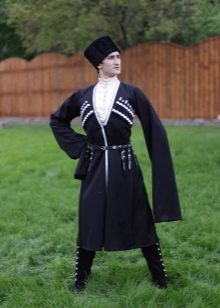
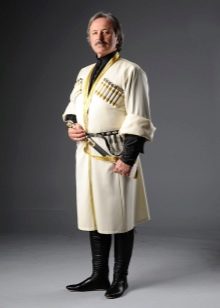
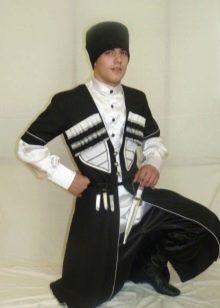
Wedding suit
Ossetian wedding dresses are truly beautiful.
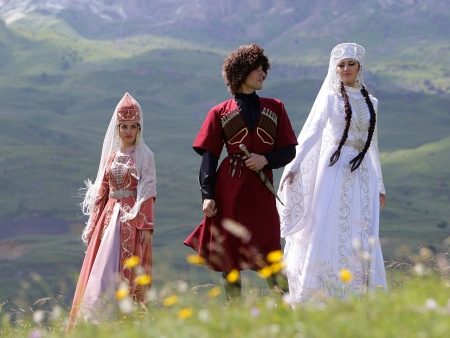
Women's wedding dress is made in compliance with all possible traditions, emphasizing the honor and chastity of the female nature, inherent in this nation.
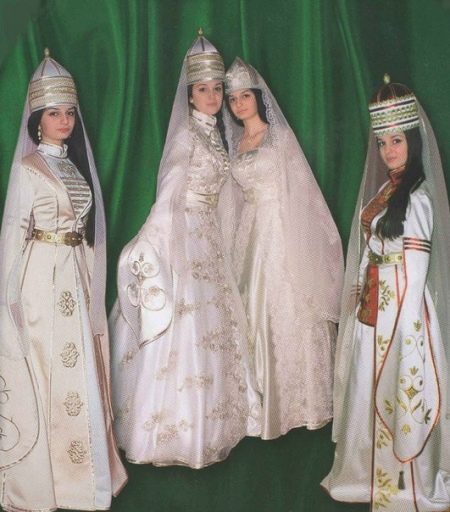
The dress has the same cut as the regular dress and consists of the same elements. The only feature is the color scheme – wedding dress for women is made of dense snow-white material, decorated with golden embroidery.
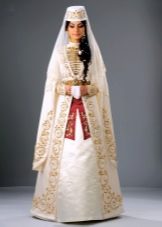


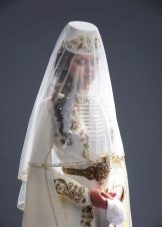
The belt of a woman's wedding Ossetian suit is made of metal with gilding, decorated with various ornaments and embossing, and in some cases with small stones of a ruby color.
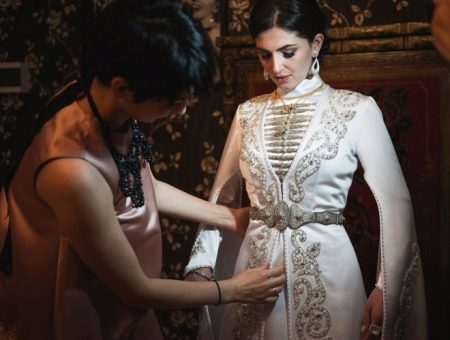
A men's wedding suit differs little from the usual one, with the exception of a more abundant decor of outerwear, usually made of dense ruby-colored material. In some cases, the groom's outfit can be made in the same color scheme as the bride's dress.
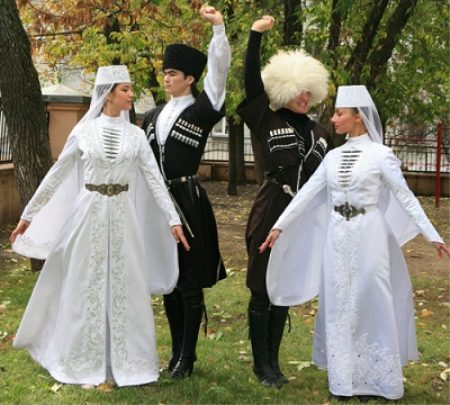
Headwear and leggings are also an integral part of men's wedding attire. These elements can be decorated with large stones or golden embroidery.
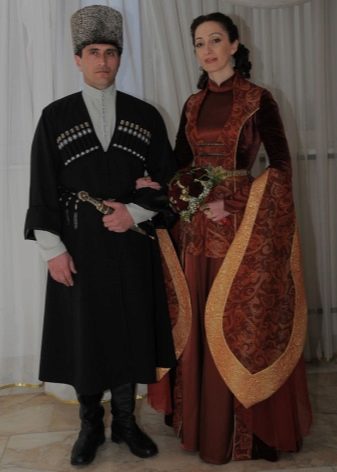
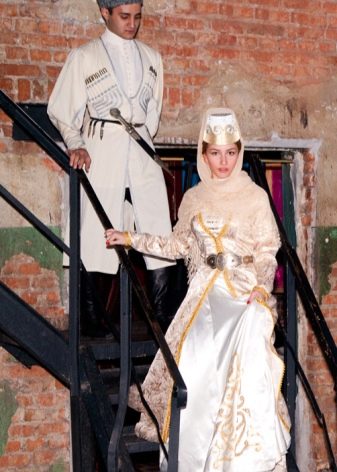









I am OSSETIAN AND I really like our costume !!!!!!!!!!!!!!!
+++++++++++!!!
Only I'm not completely Ossetian))) I'm still Ukrainian)